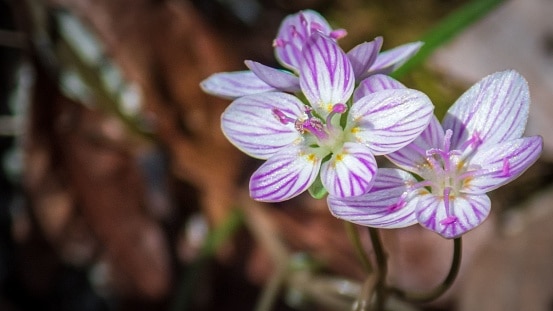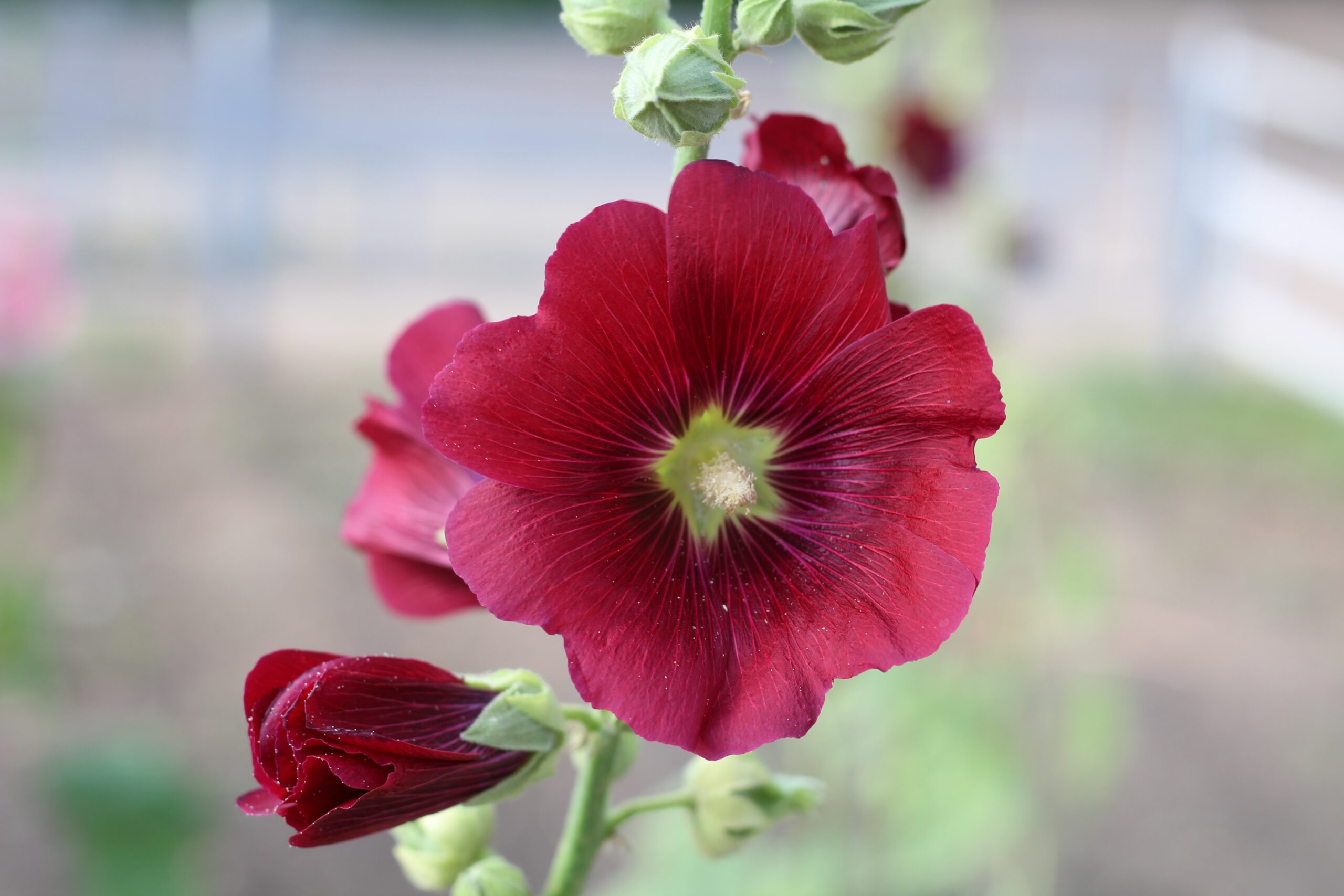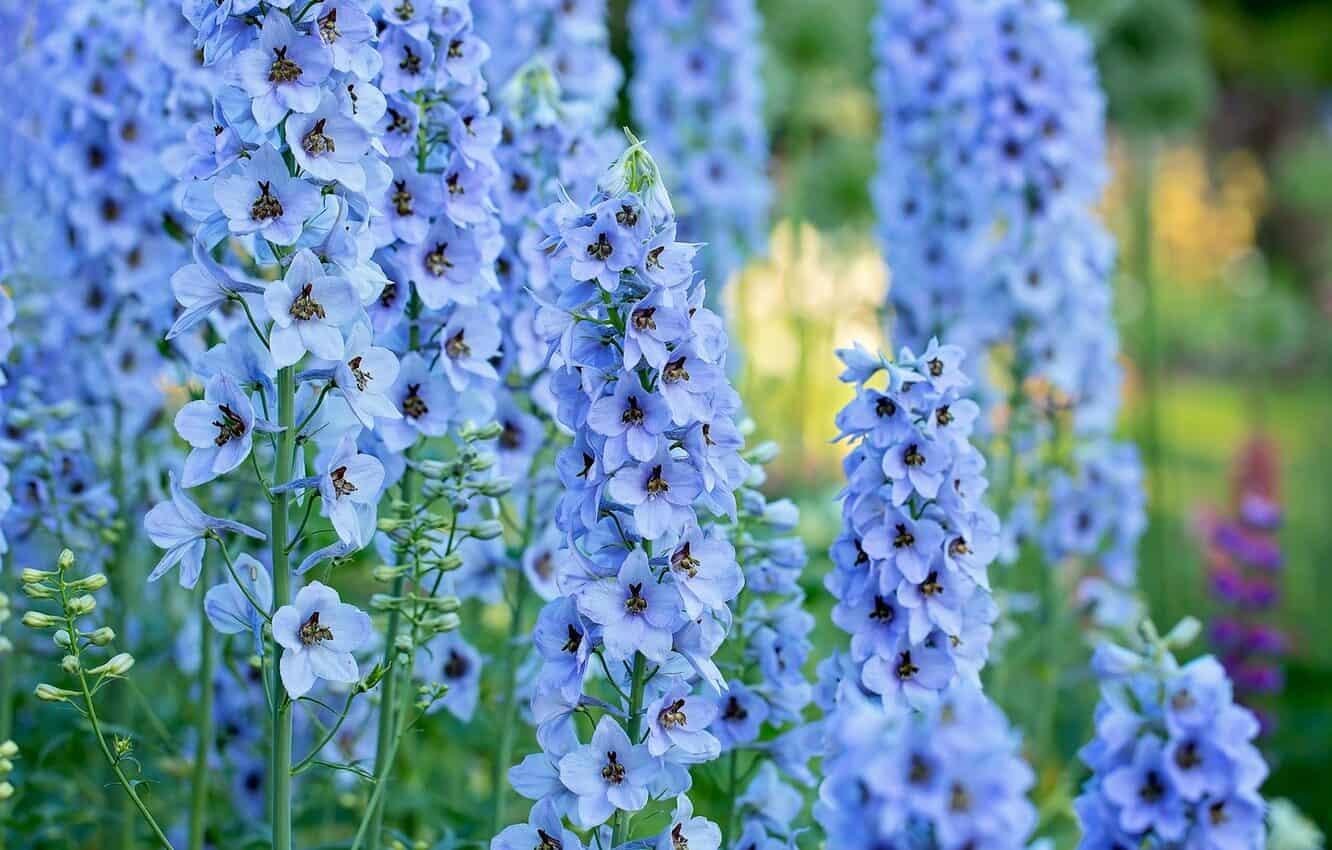Spring Beauty (Claytonia Virginica) is a delicate perennial that is native to North America, specifically in woodlands. This gorgeous flower produces clusters of small star-shaped blooms that range from pale pink to white in color, along with deep pink veins. They are an essential source of nectar to pollinators, and can also be grown in rock gardens and as a ground cover. The root is small, potato-like and edible.
Family
Spring Beauty (Claytonia virginica) is a small, delicate wildflower that belongs to the Portulacaceae family. It is a perennial plant that is native to eastern North America and typically grows to be 4-8 inches tall. The plant produces showy pink or white flowers that bloom in early spring, and the flowers close at night or on cloudy days. Spring Beauty grows well in moist, well-draining soil in partial shade to full sun. It is a common sight in woodlands, meadows, and prairies across its native range. The plant is also a favorite of pollinators such as bees and butterflies, making it a great addition to any garden focused on promoting biodiversity.
Plant Type
Spring Beauty (Claytonia virginica) is a spring-blooming herbaceous perennial plant. It grows from a small, round corm and produces a rosette of leaves that are ovate to lanceolate in shape. The leaves can vary in color from green to reddish-purple and have a smooth, waxy texture. The plant produces slender stems with delicate, pink or white flowers in early spring. The flowers have five petals and are arranged in loose clusters. The plant typically grows to be 6-12 inches tall and spreads by reseeding itself. As a perennial, Spring Beauty can live for several years if provided with the proper growing conditions.
Mature Size
Spring Beauty is a small and delicate flower that typically reaches a mature height of 4-6 inches. The stem of the plant is thin and erect, with slender leaves growing alternately along its length. The flowers themselves are small and star-shaped, typically measuring around 1-2 cm in diameter. Despite their small size, the flowers are quite eye-catching, with shades of pink, white, and purple often present. As the plant matures, it may develop a dense mat of foliage, which can help to suppress the growth of competing weeds and other plants.
Sun Exposure
Spring Beauty prefers to grow in partial shade, which is an area that receives at least 3-6 hours of sunlight per day, but it can also tolerate full sun. However, when grown in full sun, the plant may need more frequent watering to prevent it from drying out. It is important to note that excessive sun exposure can cause the plant to wilt and affect its overall health. Therefore, it is recommended to place the plant in an area that receives partial shade during the hottest part of the day.
Soil Type
Spring Beauty prefers well-draining, moist soil that is rich in organic matter. The optimal soil pH for this flower ranges between 5.5 to 6.5, which is slightly acidic. It can tolerate some drought but prefers to be kept moist. In addition to good soil drainage, Spring Beauty requires good air circulation to prevent fungal diseases. Organic mulch can help to conserve moisture and regulate soil temperature, which can be especially beneficial during hot summer months. It is important to avoid overwatering Spring Beauty, as this can lead to root rot and other issues.
Bloom Time
Spring Beauty blooms from early spring to early summer, typically starting in March and lasting until June. The delicate, five-petaled flowers usually emerge in shades of pink, white, or lavender and have a charming, dainty appearance. They are typically borne on slender stems that rise above the low-growing foliage, making them a popular choice for rock gardens or naturalistic plantings. The blooms of Spring Beauty are also an important early-season nectar source for bees and other pollinators. After the flowers fade, the plant will produce small seed capsules that can be collected and sown to propagate new plants.
Flower Color
The flower blooms pale to white in color, with deep pink veins.
Hardiness Zones
Spring Beauty (Claytonia virginica) is a hardy perennial plant that can thrive in a wide range of climates. It is best suited to grow in USDA hardiness zones 3 to 9. This plant is quite adaptable and can grow in many different soil types and light conditions. It prefers well-draining soil that is rich in organic matter, but can also tolerate poor soil. Spring Beauty is a small plant that typically grows to a height of 4 to 6 inches, making it an ideal choice for borders and rock gardens. It prefers partial shade but can also tolerate full sun. The blooming period for this plant is in early spring to early summer, producing delicate white or pink flowers.
Native Area
This flower is native to North America, particularly the Eastern and Midwest states.
How to Plant
When planting Spring Beauty, it is important to select an area with well-draining soil. The soil should not be too wet and should be amended with compost or other organic matter before planting. To plant, create a hole large enough to accommodate the root ball, and keep the level of soil from the root ball slightly higher than the soil level. Water the plant after planting to ensure that it is moist.
Light
Spring Beauty prefers a part shade to full shade environment. It should be protected from the afternoon sun or heat.
Temperature and Humidity
Spring Beauty should be protected from cold temperatures and frost. It prefers a humid environment.
Water
Water the plant regularly, allowing the soil to dry out between watering. Do not overwater, as this can lead to root rotting.
Fertilizer
Fertilize the plant once a month with a balanced fertilizer.
Meaning and Symbolism
In traditional Victorian culture, this plant symbolizes happiness, joy, and innocence. In some cultures, the flower is seen as a symbol of protection, as it was said to have the power to keep people safe.
History, Mythology, and Religious Significance
Spring Beauty has been part of myths and legends for centuries. Native Americans believed that the petals had the power to reveal secret messages from the stars. In some parts of Europe, it was believed that Spring Beauty kept away evil spirits.
Flower Varieties and Their Defining Characteristics
Claytonia Virginica has several varieties, each with different characteristics. Some of the varieties include:
- Slender-Stem Spring Beauty (C. Virginica var. Coloradensis) – This variety has slender stems and small white flowers with deep pink veins, and grows up to 4-6 inches tall.
- Virginia Spring Beauty (C. Virginica var. Virginica) – This variety has stout stems and white flowers with deep pink veins, and grows up to 8-12 inches tall.
How to Pot and Repot
When potting Spring Beauty, choose a container that has good drainage. If planting in a pot, use potting soil and make sure to keep it moist. If repotting, carefully remove the plant from the container and transplant it into a new pot filled with well-draining potting soil.
How to Prune
Pruning helps to encourage healthier growth and more flowers. Prune the flower after it has bloomed. Cut back the main stems, leaving about two or three inches of the previous year’s growth.
How to Propagate
This plant can be propagated from seeds and from cuttings. To propagate from seed, collect the seed heads once they are dried and split open. Rinse the seeds and store them in a cool, dry place until spring. To propagate from cuttings, take a 6-inch cutting from a healthy plant and plant it in a well-draining potting medium.
Common Pests and Diseases
Common pests of Spring Beauty include aphids, whiteflies, and thrips. Common diseases of Claytonia Virginica include powdery mildew, rust, and root rot. To prevent these pests and diseases, use a balanced fertilizer and make sure to water the plant correctly.
Frequently Asked Questions
Q: Can Spring Beauty be grown indoors?
A: Yes, Spring Beauty can be grown indoors as long as proper care and light exposure are provided.
Q: How often should Spring Beauty be fertilized?
A: Spring Beauty should be fertilized once a month with a balanced fertilizer.
Q: How much sun does Spring Beauty need?
A: Spring Beauty prefers partial shade, but can tolerate full sun.
Fact sheet
| Plant Name | Claytonia Virginica – Spring Beauty |
|---|---|
| Family | Portulacaceae |
| Plant Type | Perennial |
| Mature Size | 4-6 inches |
| Sun Exposure | Partial Shade |
| Soil Type | Multilated, Moist |
| Soil pH | Slightly Acidic |
| Bloom Time | Early Spring to Early Summer |
| Flower Color | Pale to White with Deep Pink Veins |
| Hardiness Zones | 3-9 |
| Native Area | North America |
What we love from Amazon this week
Buy these wonderful flowers directly from Amazon:















